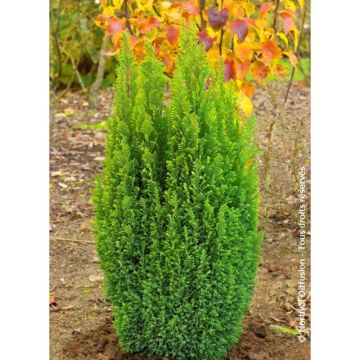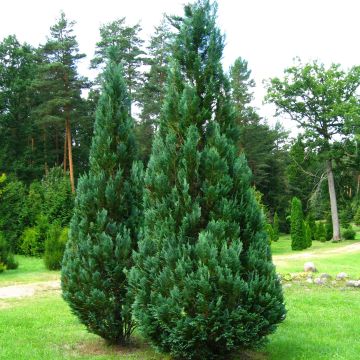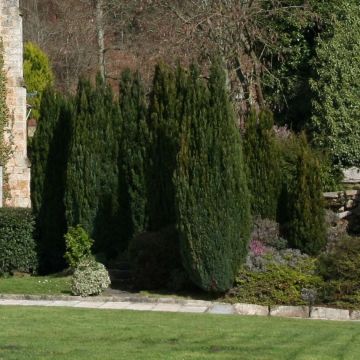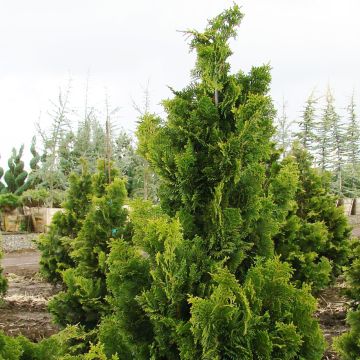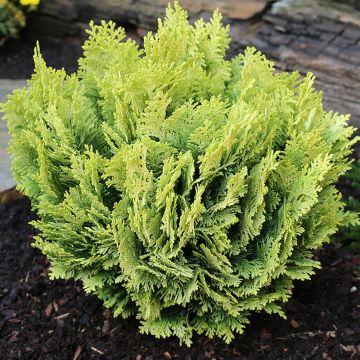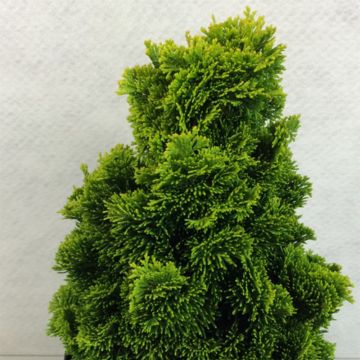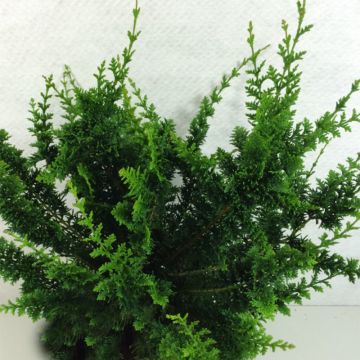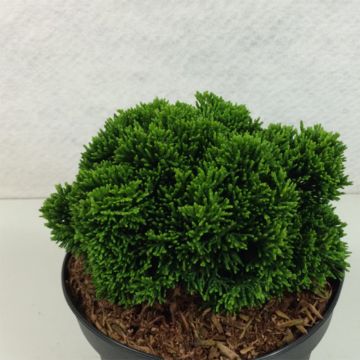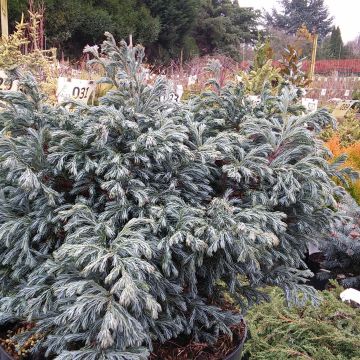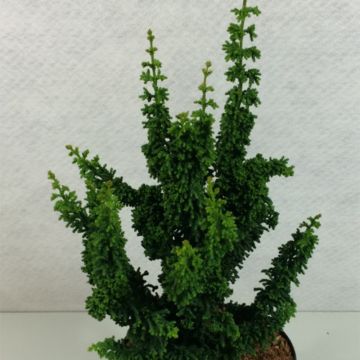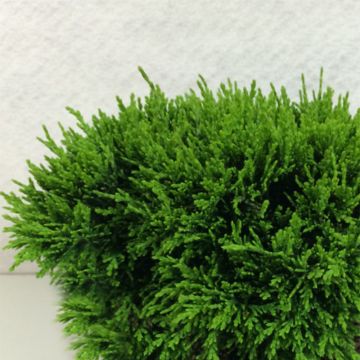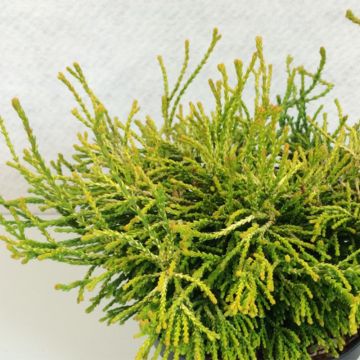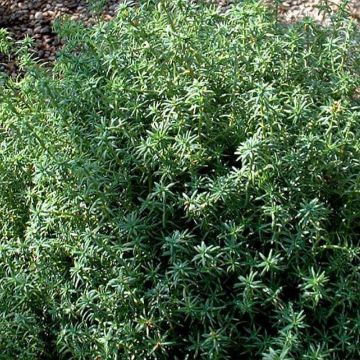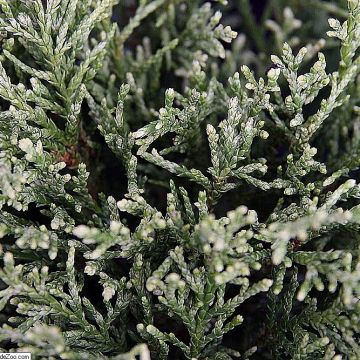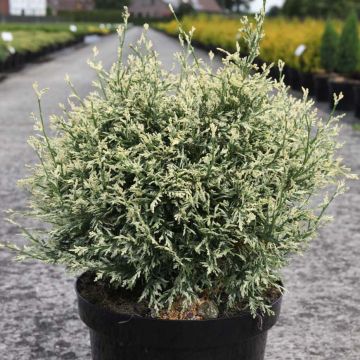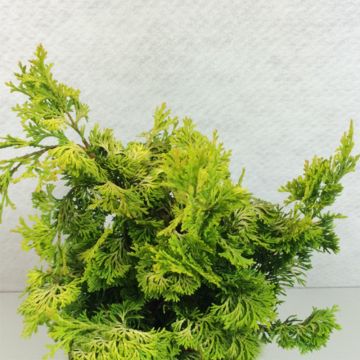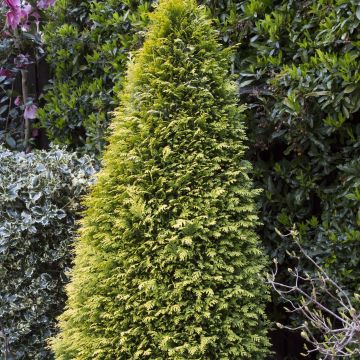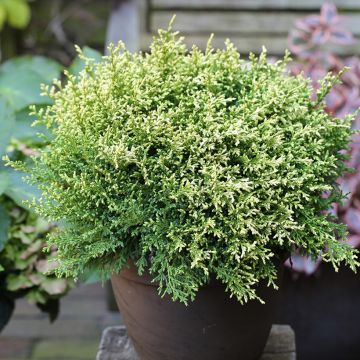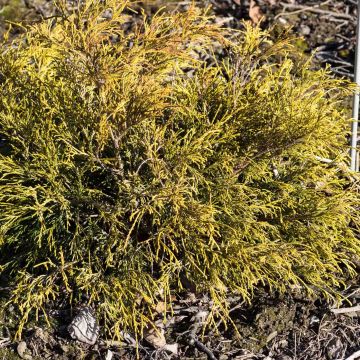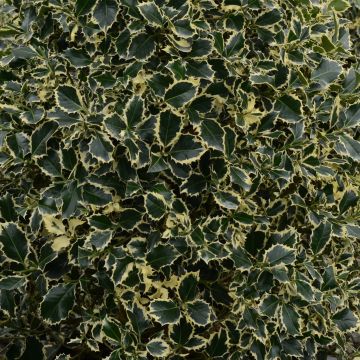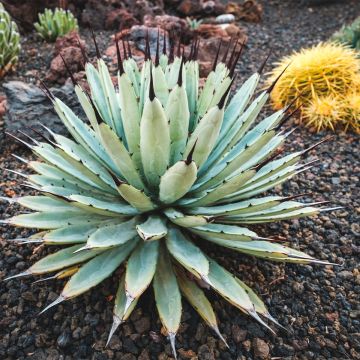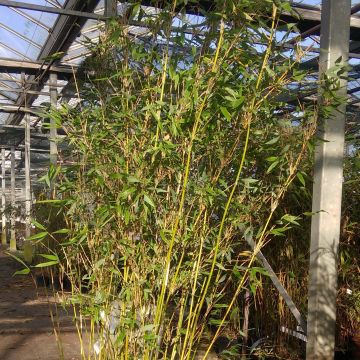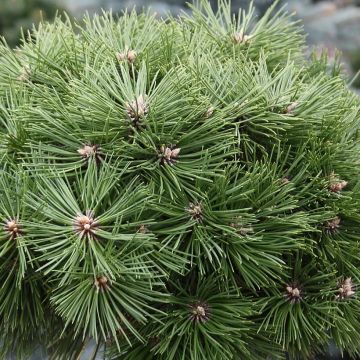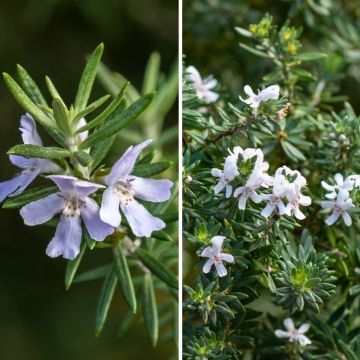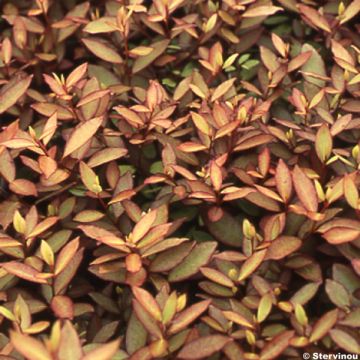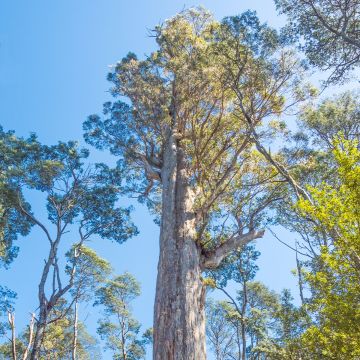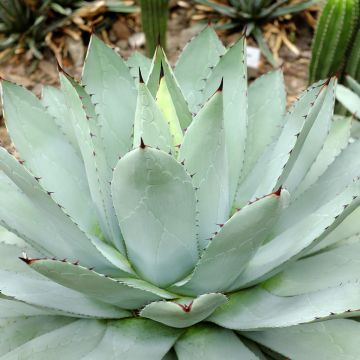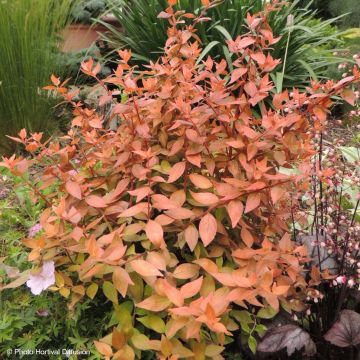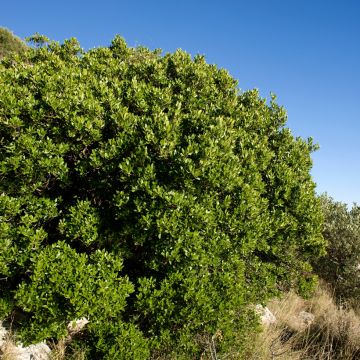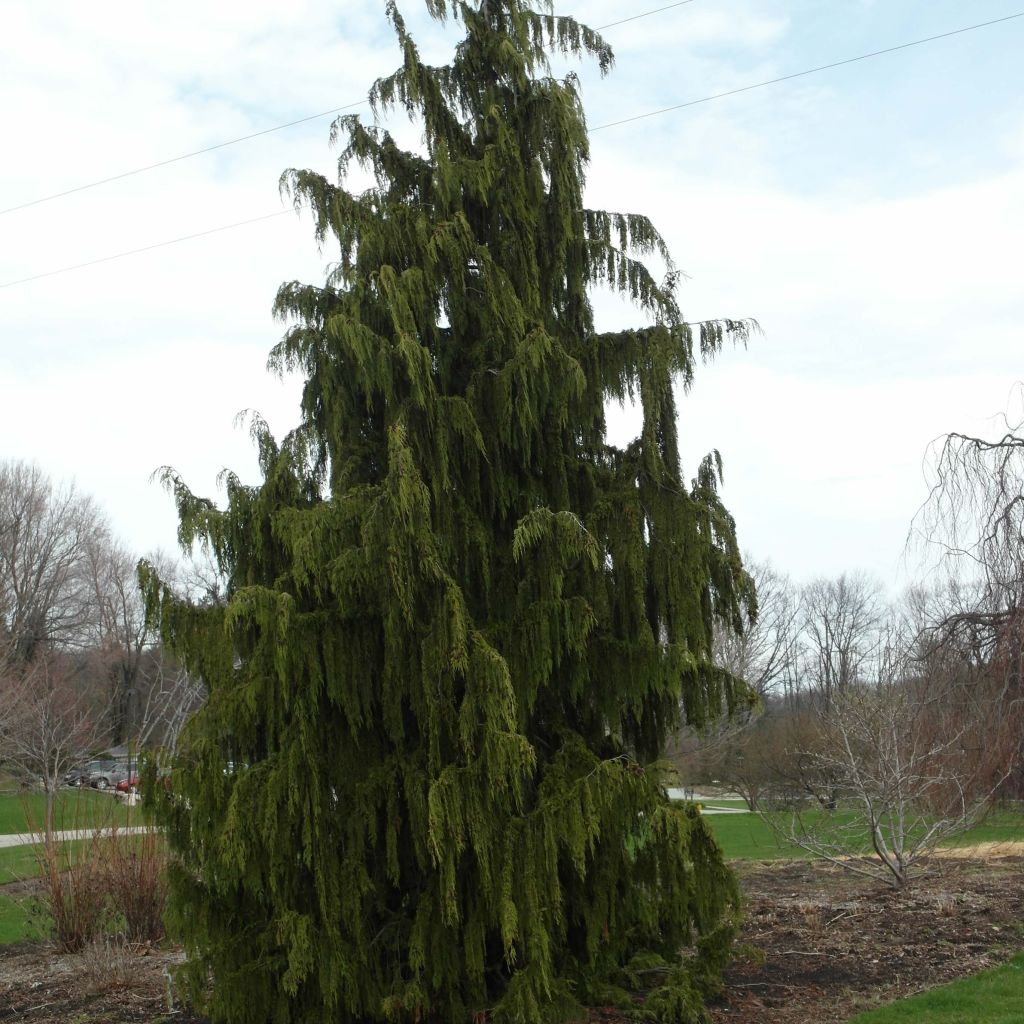

Chamaecyparis nootkatensis Pendula - Cyprès de Nootka pleureur
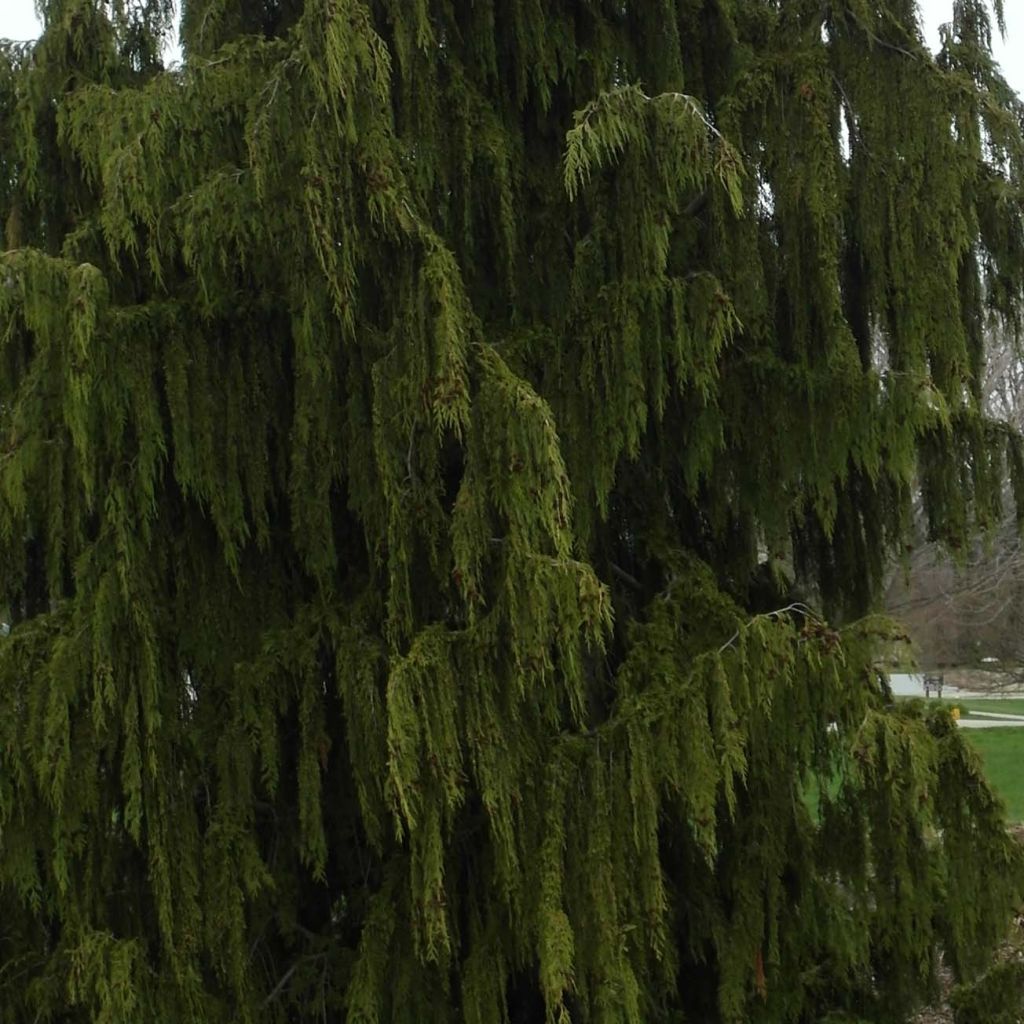

Chamaecyparis nootkatensis Pendula - Cyprès de Nootka pleureur
Chamaecyparis nootkatensis Pendula - Weeping Nootka Cypress
Chamaecyparis nootkatensis Pendula
Weeping Nootka cypress
Arrived well packaged, I appreciated it, thank you.
bernard, 23/01/2021
Why not try an alternative variety in stock?
View all →This plant carries a 24 months recovery warranty
More information
We guarantee the quality of our plants for a full growing cycle, and will replace at our expense any plant that fails to recover under normal climatic and planting conditions.
From €5.90 for pickup delivery and €6.90 for home delivery
Express home delivery from €8.90.
Does this plant fit my garden?
Set up your Plantfit profile →
Description
Chamaecyparis nootkatensis 'Pendula', more commonly known as Weeping Nootka Cypress, is a large conifer with a picturesque and graceful appearance with its conical upright habit and trailing branches. It produces loose and horizontal branches, from which drape beautiful dark green curtains. This hardy and wildly romantic conifer reaches approximately 20m (65ft 7in) in height and 8m (26ft 2in) in spread. It can be planted as a specimen or in small groups in the middle of a lawn in a medium to large-sized garden. It thrives in full sun or partial shade, in preferably light, acidic, fertile, and moist soil.
Chamaecyparis nootkatensis 'Pendula' is a majestic conifer from the Cupressaceae family, native to the humid and acidic coastal regions of the northwest United States. In its natural environment, it often reaches heights of over 30m (98ft 5in). It has a straight and conical habit, and its trailing branches form soft curtains adorned with dark green foliage.
In our climate, the Chamaecyparis nootkatensis 'Pendula' will have a more moderate growth. It forms a mysterious and elegant tree with a very weeping upright habit, reaching between 15 and 20m (49ft 2in and 65ft 7in) in height and 8 to 10m (26ft 2in to 32ft 10in) in spread. It grows slowly when young and then the growth accelerates slightly as it ages. It consists of irregular and spreading branches, very layered, from which highly weeping lateral branches emerge. Its foliage is matte dark green, slightly lighter in spring. Its small leaves are scale-shaped and emit a resinous and aromatic scent when rubbed. Cones appear in March-April at the tips of the branches, maturing the following year. It has a shallow root system that does not tolerate transplantation well, weakens it against strong winds, and makes it difficult to associate with perennials.
Weeping Nootka Cypress, with its exceptional ornamental qualities and ease of cultivation, deserves to be planted more often. It thrives in cool, rich, slightly acidic soil, in a sunny to semi-shady exposure. Majestic and elegant, it can be planted as a specimen on a lawn, prominently displayed to enjoy its beautiful silhouette. The architectural qualities of conifers naturally impose themselves in the design of a contemporary garden, which prefers the aesthetics of shapes, silhouettes, and textures over flowers. These plants structurally define a perennial bed, mark pathways and border terraces, easily replacing the strong presence of trimmed boxwood or holly. The key is to play with volumes and colours.
Report an error about the product description
Chamaecyparis nootkatensis Pendula - Weeping Nootka Cypress in pictures
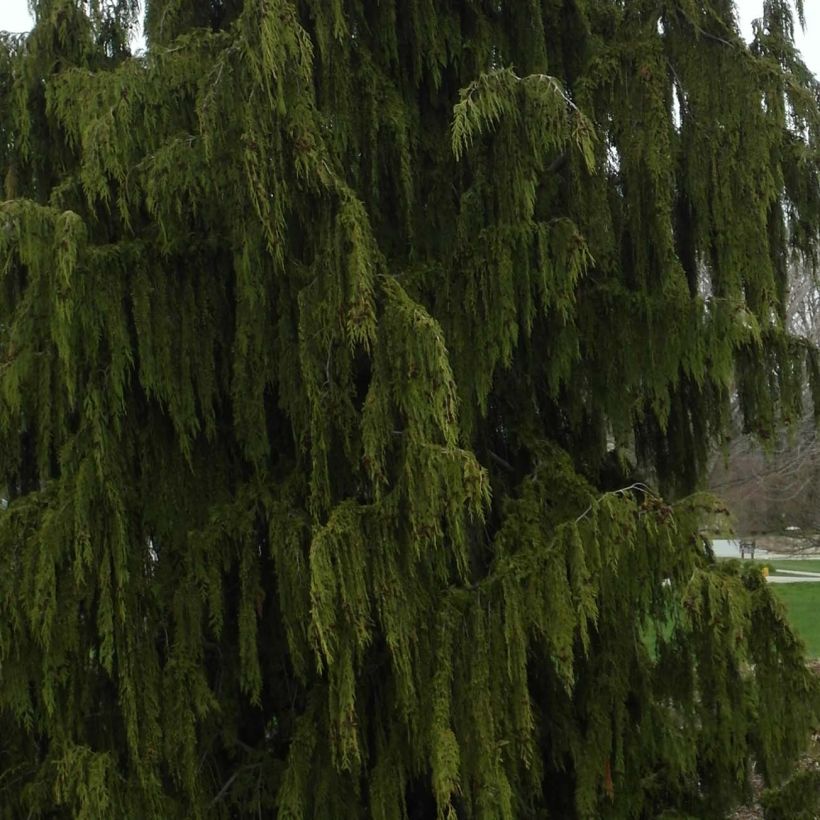

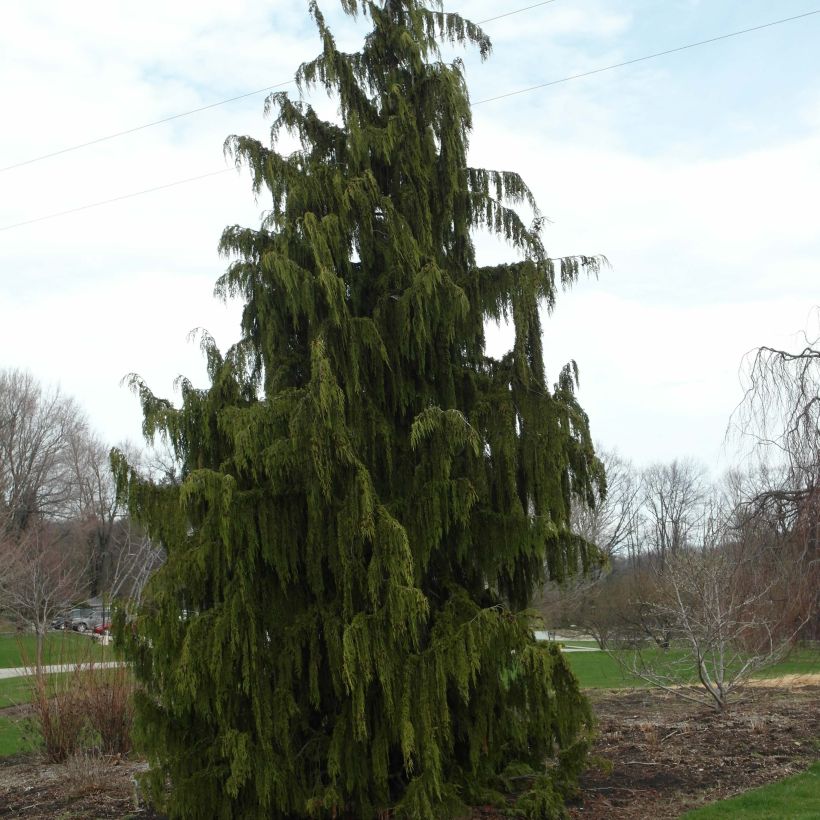

Plant habit
Flowering
Foliage
Botanical data
Chamaecyparis
nootkatensis
Pendula
Cupressaceae
Weeping Nootka cypress
North America
Other Chamaecyparis
Planting and care
Chamaecyparis nootkatensis 'Pendula' is best planted in spring or autumn, in a light, moisture-retaining soil, rich in humus, slightly acidic or neutral. This conifer thrives in the sun (in a fairly humid climate) or in partial shade. Water the plants regularly during the months following planting. This conifer is not too demanding of soil quality, but it suffers in dry soils and climates. It is a species of cool, oceanic or mountain climates. This tree does not require pruning, but it can tolerate it if it remains light: shorten the young branches without going back to the level of the old wood.
Planting period
Intended location
Care
-
, onOrder confirmed
Reply from on Promesse de fleurs
Evergreen shrubs
Haven't found what you were looking for?
Hardiness is the lowest winter temperature a plant can endure without suffering serious damage or even dying. However, hardiness is affected by location (a sheltered area, such as a patio), protection (winter cover) and soil type (hardiness is improved by well-drained soil).

Photo Sharing Terms & Conditions
In order to encourage gardeners to interact and share their experiences, Promesse de fleurs offers various media enabling content to be uploaded onto its Site - in particular via the ‘Photo sharing’ module.
The User agrees to refrain from:
- Posting any content that is illegal, prejudicial, insulting, racist, inciteful to hatred, revisionist, contrary to public decency, that infringes on privacy or on the privacy rights of third parties, in particular the publicity rights of persons and goods, intellectual property rights, or the right to privacy.
- Submitting content on behalf of a third party;
- Impersonate the identity of a third party and/or publish any personal information about a third party;
In general, the User undertakes to refrain from any unethical behaviour.
All Content (in particular text, comments, files, images, photos, videos, creative works, etc.), which may be subject to property or intellectual property rights, image or other private rights, shall remain the property of the User, subject to the limited rights granted by the terms of the licence granted by Promesse de fleurs as stated below. Users are at liberty to publish or not to publish such Content on the Site, notably via the ‘Photo Sharing’ facility, and accept that this Content shall be made public and freely accessible, notably on the Internet.
Users further acknowledge, undertake to have ,and guarantee that they hold all necessary rights and permissions to publish such material on the Site, in particular with regard to the legislation in force pertaining to any privacy, property, intellectual property, image, or contractual rights, or rights of any other nature. By publishing such Content on the Site, Users acknowledge accepting full liability as publishers of the Content within the meaning of the law, and grant Promesse de fleurs, free of charge, an inclusive, worldwide licence for the said Content for the entire duration of its publication, including all reproduction, representation, up/downloading, displaying, performing, transmission, and storage rights.
Users also grant permission for their name to be linked to the Content and accept that this link may not always be made available.
By engaging in posting material, Users consent to their Content becoming automatically accessible on the Internet, in particular on other sites and/or blogs and/or web pages of the Promesse de fleurs site, including in particular social pages and the Promesse de fleurs catalogue.
Users may secure the removal of entrusted content free of charge by issuing a simple request via our contact form.
The flowering period indicated on our website applies to countries and regions located in USDA zone 8 (France, the United Kingdom, Ireland, the Netherlands, etc.)
It will vary according to where you live:
- In zones 9 to 10 (Italy, Spain, Greece, etc.), flowering will occur about 2 to 4 weeks earlier.
- In zones 6 to 7 (Germany, Poland, Slovenia, and lower mountainous regions), flowering will be delayed by 2 to 3 weeks.
- In zone 5 (Central Europe, Scandinavia), blooming will be delayed by 3 to 5 weeks.
In temperate climates, pruning of spring-flowering shrubs (forsythia, spireas, etc.) should be done just after flowering.
Pruning of summer-flowering shrubs (Indian Lilac, Perovskia, etc.) can be done in winter or spring.
In cold regions as well as with frost-sensitive plants, avoid pruning too early when severe frosts may still occur.
The planting period indicated on our website applies to countries and regions located in USDA zone 8 (France, United Kingdom, Ireland, Netherlands).
It will vary according to where you live:
- In Mediterranean zones (Marseille, Madrid, Milan, etc.), autumn and winter are the best planting periods.
- In continental zones (Strasbourg, Munich, Vienna, etc.), delay planting by 2 to 3 weeks in spring and bring it forward by 2 to 4 weeks in autumn.
- In mountainous regions (the Alps, Pyrenees, Carpathians, etc.), it is best to plant in late spring (May-June) or late summer (August-September).
The harvesting period indicated on our website applies to countries and regions in USDA zone 8 (France, England, Ireland, the Netherlands).
In colder areas (Scandinavia, Poland, Austria...) fruit and vegetable harvests are likely to be delayed by 3-4 weeks.
In warmer areas (Italy, Spain, Greece, etc.), harvesting will probably take place earlier, depending on weather conditions.
The sowing periods indicated on our website apply to countries and regions within USDA Zone 8 (France, UK, Ireland, Netherlands).
In colder areas (Scandinavia, Poland, Austria...), delay any outdoor sowing by 3-4 weeks, or sow under glass.
In warmer climes (Italy, Spain, Greece, etc.), bring outdoor sowing forward by a few weeks.

































